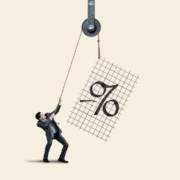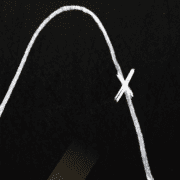Oscillation, Feedback, and Resonance
I just saw this fascinating video of a bunch of metronomes that begin ticking out of sync with one another, but slowly line up until they all beat in unison. I really love the title slide where it says “NONLINEAR DYNAMICAL SYSTEMS”, how apropos! Watch the video, the outcome is counterintuitive.
The metronomes show some principles of a non-linear, dynamic system including periodic inputs of energy, oscillation, resonance, and positive feedback. These are key concepts in my series on the Theory of Interest and Prices in Paper Currency. In Part I, I discuss the assumption that the monetary system is linear and static. Later in Part III, I discuss periodic input of energy, oscillation, and resonance. In Part IV, I discuss feedback, both negative which damps a system and positive which runs away.
Our monetary system cannot be understood in terms of the quantity of money. It is convenient, tempting, and easy to assume that if the money supply doubles*, then prices should eventually double sooner or later. It was convenient for the Medievals to assume that if you throw a rock then it first flies straight until it sooner or later runs out of force and falls straight down. Both are errors of rationalism, of sitting in an armchair imagining how the world ought to be, how it should fit with preconceived notions.
But neither rocks nor money work that way. Science must begin by observation, and only then is one entitled to try to generalize and form a theory. What would the simplistic linear quantity theory of metronomes predict? One would assume that the more metronomes one had ticking away (assuming they were not synchronized manually), the more that the sound would approach white noise. The average interval between ticks would be 1/N where N is the number of metronomes. As N became sufficiently large the ticks would blur into a continual sound.
As the video shows, it just does not happen that way. Instead, there is periodic input of energy from each metronome to the shelf on which they sit, and periodic input of energy from the shelf to each metronome. This creates both positive feedback and negative feedback. A metronome that is slightly “behind” the average is given more energy to accelerate, and one that is “ahead” is drained.
With the harmless experiment of a bunch of ticking pendulums, the end result is that they all end up in tight sync with one another. There is negative feedback to ensure this. Without negative feedback, the oscillations would grow and grow until either the devices began to leap off the shelf, or the shelf fell out of its brackets, or maybe the shelf broke (as in the Tacoma Narrows Bridge).
With the current monetary experiment, the result is cycles of rising and falling interest rates and booms and busts, with increasing amplitude. The positive feedbacks in the system are overwhelming the negative feedbacks, which have been removed or suppressed by deliberate government policy.
If there is one take-away that I hope every reader gets from this article and my series on interest and prices, it is that the monetary system is non-linear, dynamic, stateful, discontiguous, and multivariate. It is time we stop obsessing over the quantity of money (and boldly issuing predictions about prices that never come true). We must start thinking about the system dynamics and the unstable interest rate before it collapses into the black hole of zero.
* Ignoring that we don’t have money in our system today, we have only credit.








Central banks move cash rates down – bid prices up – in an attempt to counteract the rising spread between the different rated ‘monies’, a negative feedback if you like. As the spread rises, the money markets are deflating, or inflating depending on where you sit in Exter’s Pyramid.
The spread only rises because the ‘money’ markets are junk, illiquid. How can rates not collapse to zero?
Are you still bearish on silver after today’s huge rise?
Thank you for your excellent analysis of gold and silver market. I wish I found your writings earlier!!
James,
Thanks for your comment.
I will give an updated picture in the Supply and Demand Report on Sunday night.
A picture being worth a thousand words, suggests for a video what, a million? In this case I say yeah. A wonderful demonstration.
The robotic experiment above in my opinion does not portray a real synchronicity of a real world experiment. It is obvious that each metronome being exactly the same would in a controlled experiment would sync at some point. The energy that flows between them sync at some point. but in the real world there is choice to deviate from the sync because everyone has a relative perspective what the sync looks like. with robots they dont have a relative perspective of their own they only have a relative to whats going around them at those particular moments . This experiment seems to me more linear than what its trying to show that it is not. if u would like to make a nonlinear experiment that have different size and shape metronome some tilted and some directed differently also put an element of wind (forces that are distorting the natural). otherwise its just an illusion representative of a real world example.